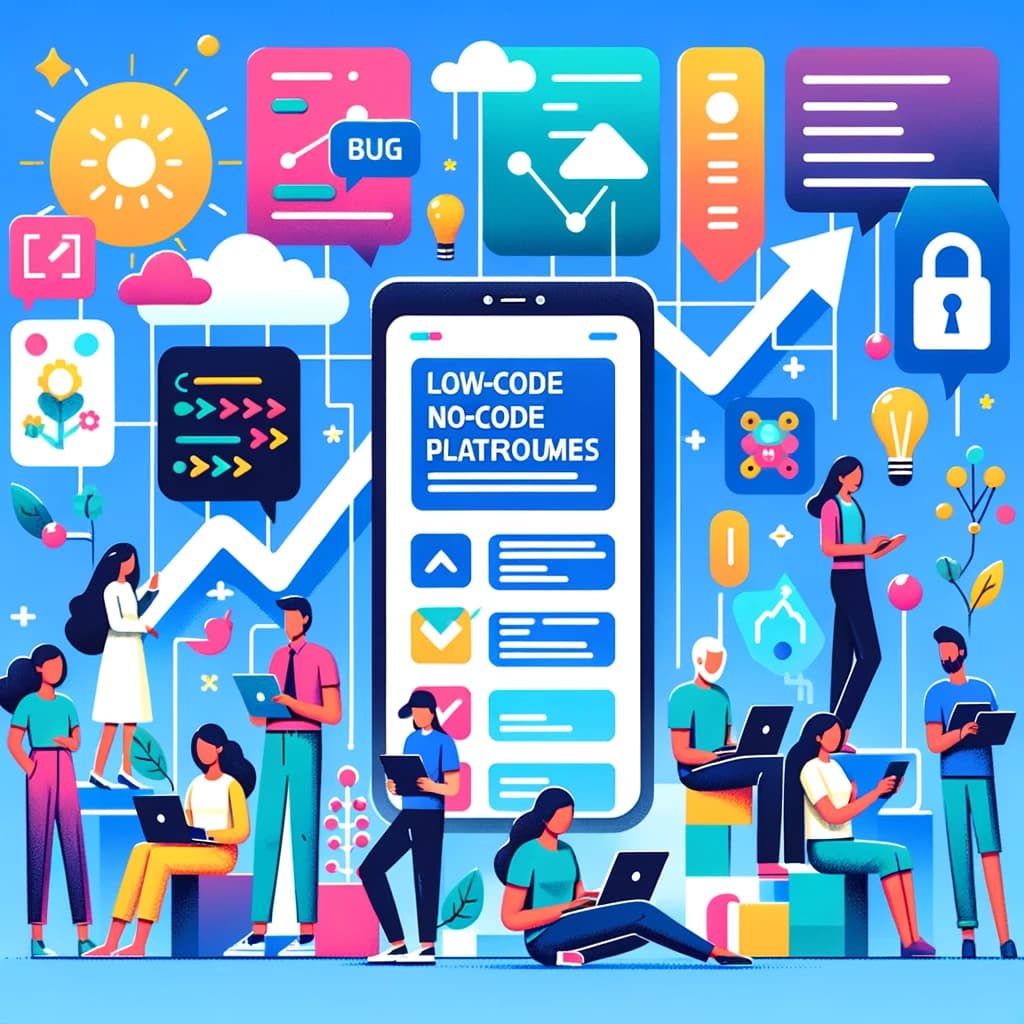
The Growth of Low-Code/No-Code Platforms: Making Software Development Accessible
Democratizing Software Development: The Rise of Low-Code/No-Code Platforms
I. Introduction
In today's rapidly evolving technological landscape, the accessibility of software development has become paramount. Traditional methods often require specialized skills and extensive training, limiting participation to a select few. However, the emergence of low-code/no-code platforms is changing the game, making software development accessible to a wider audience than ever before.

A. Definition of Low-Code/No-Code Platforms
Low-code/no-code platforms, as the name suggests, enable users to develop applications with minimal or no coding expertise. These platforms provide visual interfaces and pre-built components that allow users to drag and drop elements to create applications quickly and efficiently.
B. Importance of Accessibility in Software Development
Accessibility in software development refers to the ability of individuals with diverse backgrounds and skill levels to participate in the creation of software solutions. In a world increasingly dependent on technology, democratizing software development is crucial for fostering innovation, inclusivity, and economic growth.
Principles of Low-Code Application Development | Benefits of Low-Code Application Development |
|---|---|
Accelerate time to value | Cost Reduction, Scalability |
Design for impact | Increased agility, Greater Productivity |
Embrace co-creation | Faster Market Time |
Organize around small, agile teams | Enhanced Collaboration |
Adopt user-centered design | Faster Development |
C. Thesis Statement
Low-code/no-code platforms have witnessed significant growth, democratizing software development by making it accessible to a wider audience. This article explores the historical context, advantages, impact on industries, challenges, future outlook, and the significance of these platforms in shaping the future of software development.
According to a Report:
The Global Low Code Development Platform market is expected to experience significant growth between 2023 and 2031. As of 2022, the market is steadily growing, and with key players implementing various strategies, it is projected to continue its upward trajectory in the foreseeable future.
Europe plays a crucial role in the global market, demonstrating impressive growth in CAGR from 2022 to 2029. The Low Code Development Platform Market is forecasted to achieve a multimillion-dollar size by 2029, experiencing an unforeseen CAGR during the period of 2022-2029 compared to 2022.
II. Historical Context
A. Evolution of Traditional Software Development
Traditional software development methods typically involve writing code from scratch using programming languages like Java, Python, or C++. While effective, this approach requires specialized skills and can be time-consuming.
B. Emergence of Low-Code/No-Code Platforms
Low-code/no-code platforms gained traction in the early 2000s with the introduction of tools like Microsoft Visual Studio and Salesforce's Force.com. These platforms aimed to simplify the development process by providing graphical interfaces and pre-built components.

C. Early Adopters and Pioneers
Early adopters of low-code/no-code platforms included startups, small businesses, and non-technical users looking for faster and more accessible ways to develop software solutions. Over time, major technology companies like Google, Microsoft, and Amazon entered the market, further fueling its growth.
III. Advantages of Low-Code/No-Code Platforms
A. Accessibility for Non-Technical Users
Low-code/no-code platforms democratize software development, enabling individuals with limited coding experience to create applications.
B. Rapid Development and Deployment
These platforms facilitate faster development cycles, allowing businesses to bring products to market more quickly and respond to changing customer needs.
C. Cost-Effectiveness
By reducing the need for specialized developers and streamlining the development process, low-code/no-code platforms can significantly lower development costs.
D. Empowerment of Citizen Developers
Citizen developers, or non-professional developers within an organization, can leverage low-code/no-code platforms to create custom solutions tailored to their specific needs.
E. Flexibility and Customization Options
Despite their simplicity, low-code/no-code platforms offer a high degree of flexibility and customization, allowing users to create complex applications tailored to their requirements.
IV. Impact on Industries and Businesses
A. Transformation of Traditional Workflows
Low-code/no-code platforms are revolutionizing how businesses approach software development, shifting away from traditional methodologies towards more agile and iterative approaches.
B. Empowering Innovation and Creativity
By lowering the barriers to entry, these platforms are fostering a culture of innovation and creativity, enabling organizations to explore new ideas and experiment with different solutions.
C. Enhanced Agility and Competitiveness
Businesses that embrace low-code/no-code platforms gain a competitive edge by responding quickly to market changes, delivering innovative solutions, and adapting to evolving customer demands.

D. Case Studies and Success Stories
Numerous case studies highlight the success of businesses that have adopted low-code/no-code platforms, showcasing their ability to drive innovation, improve efficiency, and achieve tangible business outcomes.
V. Challenges and Limitations
A. Complexity of Scaling Applications
While low-code/no-code platforms excel at rapid prototyping and development, scaling applications to meet the needs of large enterprises can be challenging.
B. Security and Compliance Concerns
As with any software development approach, security and compliance are significant considerations when using low-code/no-code platforms, especially in regulated industries.
C. Dependency on Vendor Ecosystems
Businesses that rely heavily on low-code/no-code platforms may find themselves locked into specific vendor ecosystems, limiting their flexibility and freedom.
D. Addressing the Needs of More Complex Projects
While suitable for many use cases, low-code/no-code platforms may not be the best fit for highly complex or specialized projects that require advanced coding skills.
VI. Future Outlook
Chris Wanstrath, the former CEO of GitHub, once said, “The future of coding is no coding at all.”

A. Continued Evolution and Innovation in Low-Code/No-Code Platforms
The low-code/no-code market is expected to continue growing rapidly, with ongoing innovations in usability, functionality, and integration capabilities.
B. Integration with Emerging Technologies
Low-code/no-code platforms are poised to integrate with emerging technologies like artificial intelligence, blockchain, and the Internet of Things, further expanding their capabilities and applicability.
C. Potential Disruptions in Software Development Landscape
As low-code/no-code platforms become more sophisticated and widespread, they have the potential to disrupt traditional software development practices and reshape the industry landscape.
D. Opportunities for Skill Development and Education
The rise of low-code/no-code platforms presents new opportunities for individuals to develop skills in software development, design thinking, and problem-solving, opening doors to new career paths and opportunities.
VII. Conclusion
In conclusion, low-code/no-code platforms are transforming the software development landscape, democratizing access to technology, and empowering individuals and businesses to innovate and create. As we look to the future, embracing and exploring the potential benefits of these platforms will be essential for staying competitive and driving growth in an increasingly digital world.